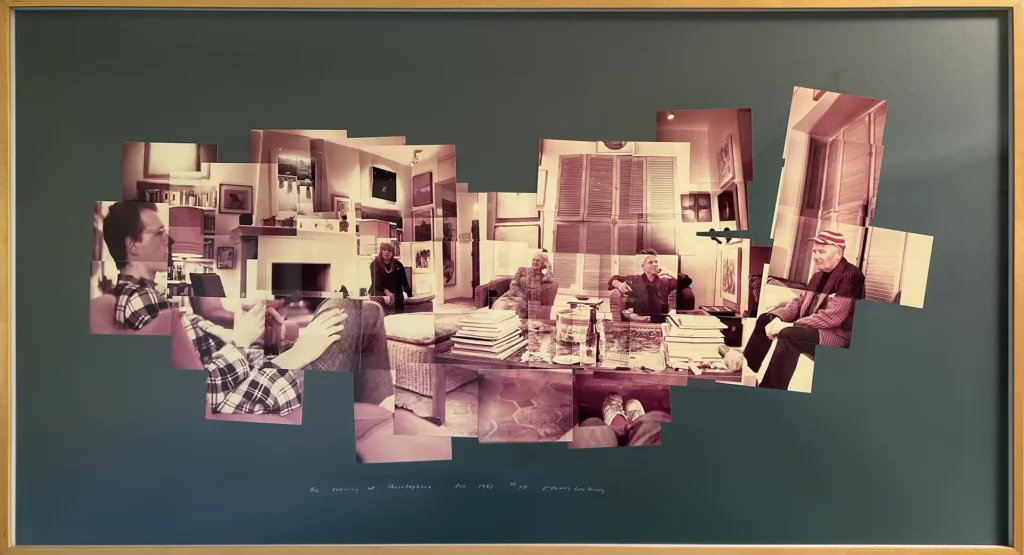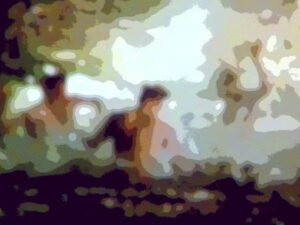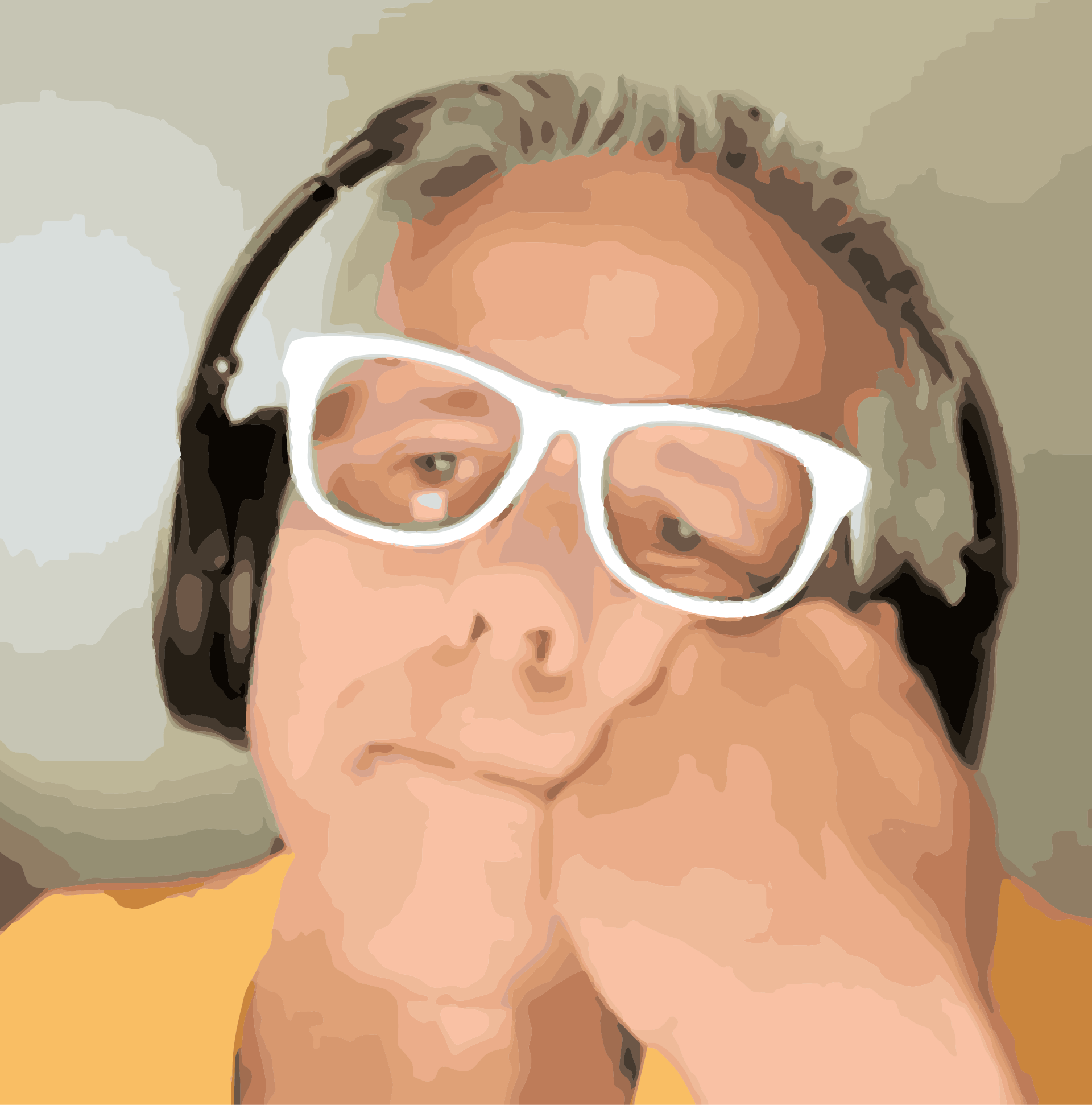“We are what we repeatedly do. Excellence, then, is not an act, but a habit.”
Aristotle
Good social bonds and organizations make us happier and more effective. I’ve devoted much of my life to finding ways to strengthen and leverage human relationships. Computers relate in these ways: as an infrastructure for sharing, and as a model of communication.
In 1994, I founded Chaco Communications, which focused on computers as social infrastructure. Chaco built tools for simulated environments, where people could meet online. We built a kids’ environment called Magnet Chat, featuring Hello Kitty and friends, for NTT Data and Sanrio in Japan. Chaco morphed into LikeMinds, which used similarities between people to adaptively recommend movies, music and books (used for the Netflix recommender, and now shipped with IBM WebSphere). I helped with a product called Aria, which aggregated traffic information to show usage patterns when millions of people visit a web site. I created a company, BigTribe Corporation, which used geographic proximity information to help bring people together.
As I increasingly found myself in management positions, I started applying principles of parallel computing to think about inter-personal interactions. The uncomfortable tradeoffs between delay, cost, and errors in computer communication were the subject of my PhD Dissertation Simulated Annealing with Errors. Naturally, I saw those tradeoffs in human communication, too, especially in big organizations, with lots of people, trying to get one big thing done. Think about any failure in your past: very likely communication delay, cost, or errors played a big role.

in 2007, I started researching and advocating agile management. I helped organize developers, marketers and user experience professionals at Citrix Online into highly transparent, agile teams, so everyone knows what others are doing, and executives worked to clear the way for their progress. I became a well-known agile and Scrum coach, leading the coach team at Skype, and training agile practices at several large companies. I developed a universal framework for understanding agile and lean practices, called “the Agile Base Patterns.” This collection of five patterns has helped guide many coaches and teams to better assess progress and improve. I’m very interested in networks of individuals, how those networks structure our lives, and how computers can help.
In 2021, I began exploring “scalable mindfulness.” What does mindfulness mean from a practical perspective? I concluded that mindfulness involves awareness, causal analysis, and targeted adjustments. Our individual challenges often arise from not realizing what is happening around us, what actually causes people to take confusing actions, and not wisely targeting our actions. But these principles also scale to organizations. You can read more about this idea in The Four Noble Truths of Agile.
I also started thinking that mindfulness needed agile to make significant change. Mindfulness is, necessarily, very inward-looking. It can improve our understanding and happiness, it can increase our harmony with outside actors, it can adjust problems. But it doesn’t experiment, it doesn’t look further than “the present moment.” I’m exploring the combination of mindfulness and agile with friends at Mindful Agility.

I love people, and I have over 3000 people in my contacts list. I also love computer science, which requires me to carve out time to ignore people. Spam is a problem, and for me the danger is both commercial spam and personal spam. With many people in my network, the effects of forwarded jokes or online polls can be overwhelming. My solution is to insist that friends follow this rule: They may send me anything that they wrote themselves. They may forward one funny email per year. No online polls! The intended effect of this rule is to force people to be more creative rather than derivative. This rule is a great one if you want to do Inbox Zero.
I love the outdoors. I grew up in rural Michigan, where teenage summers found me hoisting an aluminum canoe to the nearby Pine River and paddling around, catching carp and frogs, watching dragonflies zoom and mate, swimming in Honeyoye Creek and collecting sheep bones. I wanted to assemble a full spinal column, but the vertebrae didn’t come from the same sheep, so I could never make it work. Winters found me cross-country skiing, and bicycling my way through a snowy 4 mile paper route (OK, my parents helped).
In my twenties and thirties, I got more wide-ranging. I backpacked Denali, Yosemite, White Mountains of New Hampshire, Isle Royale, Baja California, Sequoia, Olympic National Park and the North Cascades. While living in Los Angeles, I bought a junky Jeep, named it “Big Fella,” unbolted the hardtop, pulled off the doors and drove around in sunglasses. While at a Complex Systems summer school at the Santa Fe Institute, I drove Big Fella up the rugged Pipeline Drive in Los Alamos. If I wasn’t a skinny geek, I actually might have looked cool.

I still play outside, but it’s more time-limited. I like to snowboard in the winter, hike in the summer. I like to day-hike and mountain bike, but time hasn’t allowed much of that. I dream about backpacking, but mostly I’m remembering the good times I had with my friends.
I love experiencing and creating art. My mother was an artist, calligrapher, graphic designer and art professor. I grew up creating plaster sand castings, paintings, paper cutouts, picture books and weavings. I love complex, dramatic, curiosity evoking paintings, photography and calligraphy. Some of my favorite works, which I own, are shown in this page.
One of my favorite art creations was Sherry Lewis Shrine, an installation pals and I built for Burning Man 1998. This 8×16 foot puppet theater invited visitors to create their own puppets or put on a puppet show. Such contributions would be rewarded with a Bombay Sapphire Martini. We videotaped most of the puppet shows. We developed a complete branding campaign. The logo featured Lamb Chop, the puppet, holding a Martini glass. We produced and distributed brochures outlining the purpose of the shrine and recounting Shari Lewis’s life. We created wooden coins that could be used to defer or trade Martini compensation. The logo appeared in huge form on all four sides of the theater, on the brochures and on the coins. On one of the last days of Burning Man, our installation was protested by the Sock Liberation Front. They shouted “Save the Socks, Save the Socks!” and demanded that people take off their socks. Participants then disappeared into the semi-autonomous tribal area between Black Rock Desert and San Francisco.
I am fiscally conservative. I believe governments (and people) should have money before they spend it, but also think governments should tax citizens to pay for common benefits. At the same time, I believe strongly in individual freedoms. This does not make me a libertarian: I fear the Tragedy of the Commons. Government and corporate management serve best by preventing local greed from destroying common wealth, while simultaneously encouraging creativity and industry.
I tend not to believe what politicians say, but watch what they do. The majority of us now agree with my early assessment of George W. Bush, who spewed comforting drivel and left us with an impossible deficit, primarily resulting from his $1.5 trillion 10 year tax cut. I loved Bill Clinton, because he reversed decades of deficit spending. Too bad some people think sexual fidelity distinguishes a good leader. Of course, I love Barack Obama. I am stupified that we elected Donald Trump.

At times I’ve been active in civic and university governance. In 1985, I was elected President of the University of California Student Association–the student government body for all 9 UC campuses–where I led some efforts to divest the UC portfolio of South African stocks. Ultimately we succeeded, with the adoption of a UC Regents resolution in 1986 to divest interests in South Africa. I wrote part of the Regents’ resolution. Combined with efforts at other universities, we motivated the US Congress to pass the Comprehensive Anti-Apartheid Act September 9, 1986 over President Reagan’s veto. The Act prohibited U.S. trade and other economic relations with South Africa. These efforts may have contributed to the end of apartheid in South Africa.
When I ran for UC Student Association President in 1985, some students voted against me solely because I was gay. Discrimination is rapidly abating, an outcome I couldn’t have imagined at that time. In most states and communities, lesbians and gays now live comfortable, open lives free of overt discrimination.
My ex-husband was a computer scientist and artist. He and I were together from 1987 to 2015 (28 years), but legal recognition for us was a roller coaster. We married when it became recognized in a US state, Massachusetts, in 2004. We lived together primarily in California. California briefly considered us married in 2004, then this was overturned, then in May 2008 the California Supreme Court ruled that our marriage was legal, then in late 2008 California voters took our marriage away with proposition 8, then in 2009 the California Supreme Court ruled marriages that were legally performed in-state (ours was out-of-state) were legal, then October 2009, Senate Bill 54 grandfathered in our out-of-state marriage. Gay marriage was finally made legal throughout the United States in a 2015 Supreme Court decision.
My most recent boyfriend, Bobby Pin, was also an artist and had many friends. He died of COVID in 2020. His obit was shared on PBS and NPR. My mindfulness skills were exercised heavily after his death—I had never lost someone so important to me. Artists inspire me to explore, and my mom was an artist, so I have many artist friends around me.
In summary, my life has consistent themes: I love people, computers and networks. I am not afraid to appear eccentric, although I’m perhaps one of the better adjusted eccentrics you’ll meet. I am very persistent, even in the face of substantial opposition. I seek situations where I can test ideas about how people can work better together. I’m a researcher and experimentalist: for example, this web site uses a WordPress “full site editing” theme called “Ollie.” My friend Justin Bejenaru and I are hacking code in WordPress Gutenberg to contribute fixes, as we find problems.
By slogging through problems on the cutting edge, I sometimes discover hidden truths and new paths. I am an entrepreneur. I like to research and publish. I hope you like me!

